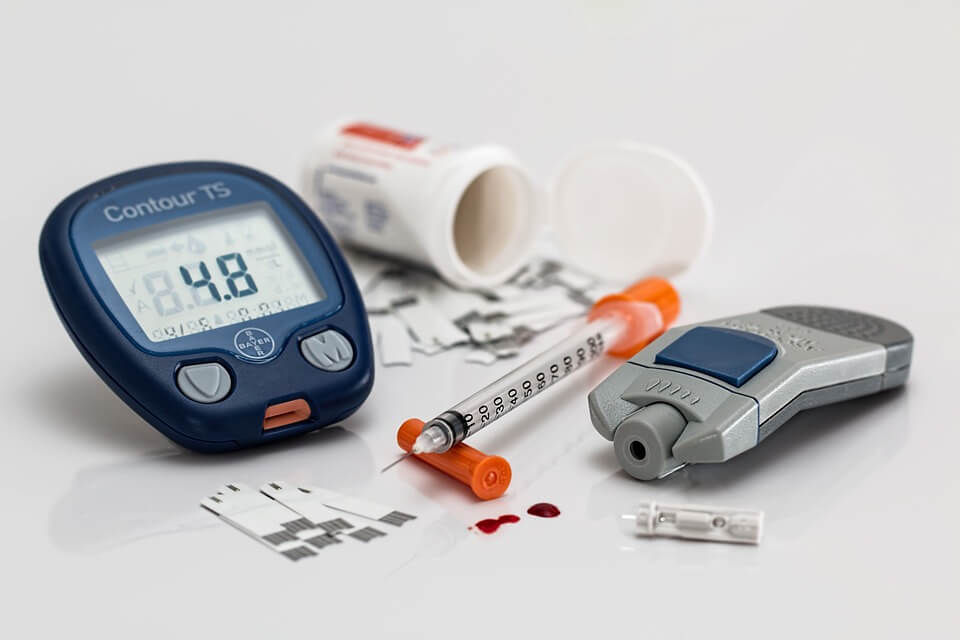
Diabetes mellitus, commonly known as diabetes, is a group of metabolic disorder characterized by high blood sugar level or hyperglycemia. Although it is well established that macrovascular complications are not directly related to blood sugar levels, increased blood sugar levels or hyperglycemia over a long period of time can cause microvascular complications like nephropathy, retinopathy, peripheral neuropathy and macrovascular complications like stroke and coronary artery disease.
Diabetes mellitus should be well controlled to prevent future complications. For this, we have to set some targets. Fasting blood sugar should remain below 130 mg/dl and postprandial levels should remain below 180 mg/ dl.
HbA1C or Glycosylated Haemoglobin or Glaciated Haemoglobin remains the gold standard in assessing blood sugar control to date. Glycosylated Haemoglobin takes consideration of fasting as well as postprandial blood sugar levels. Thus it’s simple and easy to measure value which can predict future complications of diabetes. A value of less than 6.5 gm/ dl of HbA1C is an indicator of good control of blood sugar levels. Glycosylated Haemoglobin remains the single parameter for physicians as well as patients for assessing blood sugar control.
Glycemic variability or swings in blood sugar level is an additional and independent predictor of complication of diabetes. A lot of studies indicate that glycemic variability is even better than glaciated haemoglobin as far as a predictor of future complications of diabetes mellitus is concerned.

Glycemic variability means variation in blood sugar level throughout the day or variation in blood sugar level at one point of time in the day on different days. Unlike Glycosylated Hemoglobin it also takes into consideration of hypoglycemia and postprandial hyperglycemia. Both hypoglycemia and hyperglycemia may increase future complications of diabetes.
Let us take an example to understand glycemic variability and how it scores over glycosylated haemoglobin for predicting future complications of diabetes mellitus. If a patient has fasting sugar of 50 and post-prandial sugar of 250 HbA1c may come in the normal range that is 6 to7 g per cent but variation in this in this blood sugar level or glycemic variability is detrimental for patients. Both hypoglycemia and hyperglycemia are not good for patients Hyperglycemia may increase future complications of diabetes and on another hand, hypoglycemia may increase the hospitalization rate. Hypoglycemia is sometimes life-threatening.

Self-monitoring of blood glucose and CGM (continuous glucose monitoring) are the tools we can use as the measurement of glycemic variability CGM is a better option than self-monitoring of blood glucose over a short period of time. Glycemic variability can be measured in numbers by a single value that is called MAGE that is the mean amplitude of glycemic excursions. The target value of MAGE is 40 mg/dL. It is an independent predictor of future chronic diabetic complications.
So, for tight control of blood sugar in diabetic patients, we require fasting and postprandial blood sugar control, HbA1 C control and minimal glycemic variability. When we achieve the above targets, we should also have an eye over cholesterol levels, obesity, smoking, blood pressure control, diet and sedentary lifestyle to reduce ultimate mortality in diabetic patients.

